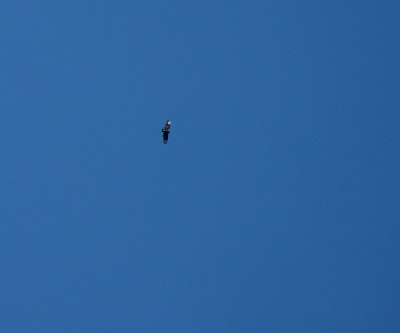Sparrows present along Gunnison Road included Song, Swamp, Lincoln's, Savannah, White-throated, American Tree, and Chipping, along with many Dark-eyed Juncos. Even without the Le Conte's or other Ammodramus types, it was delightful to watch so many sparrows yesterday. Getting the chance to watch Lincoln's and Swamp Sparrows was especially rewarding – the first for its relative rarity and the second since it is one of my favorites. In the same area, there were good numbers of Hermit Thrushes, Eastern Phoebes, both kinglet species, and Brown Creepers. Many of the kinglets seemed to be foraging at or near ground level, often in a grassy lawn. Normally I see kinglets higher in the vegetation structure, so I was surprised to see them acting like juncos.
Raptors included several Red-tailed Hawks, at least two Merlins, and a few Sharp-shinned Hawks. Someone reported a Yellow-breasted Chat at the Gunnison lot a day or two ago, but it was either not present or uncooperative today. However, there was an immature White-crowned Sparrow near Battery Gunnison.
Here are a few photos of the autumn foliage on Sandy Hook:
There were very few butterflies around, but I did see a few Pearl Crescents.

























































